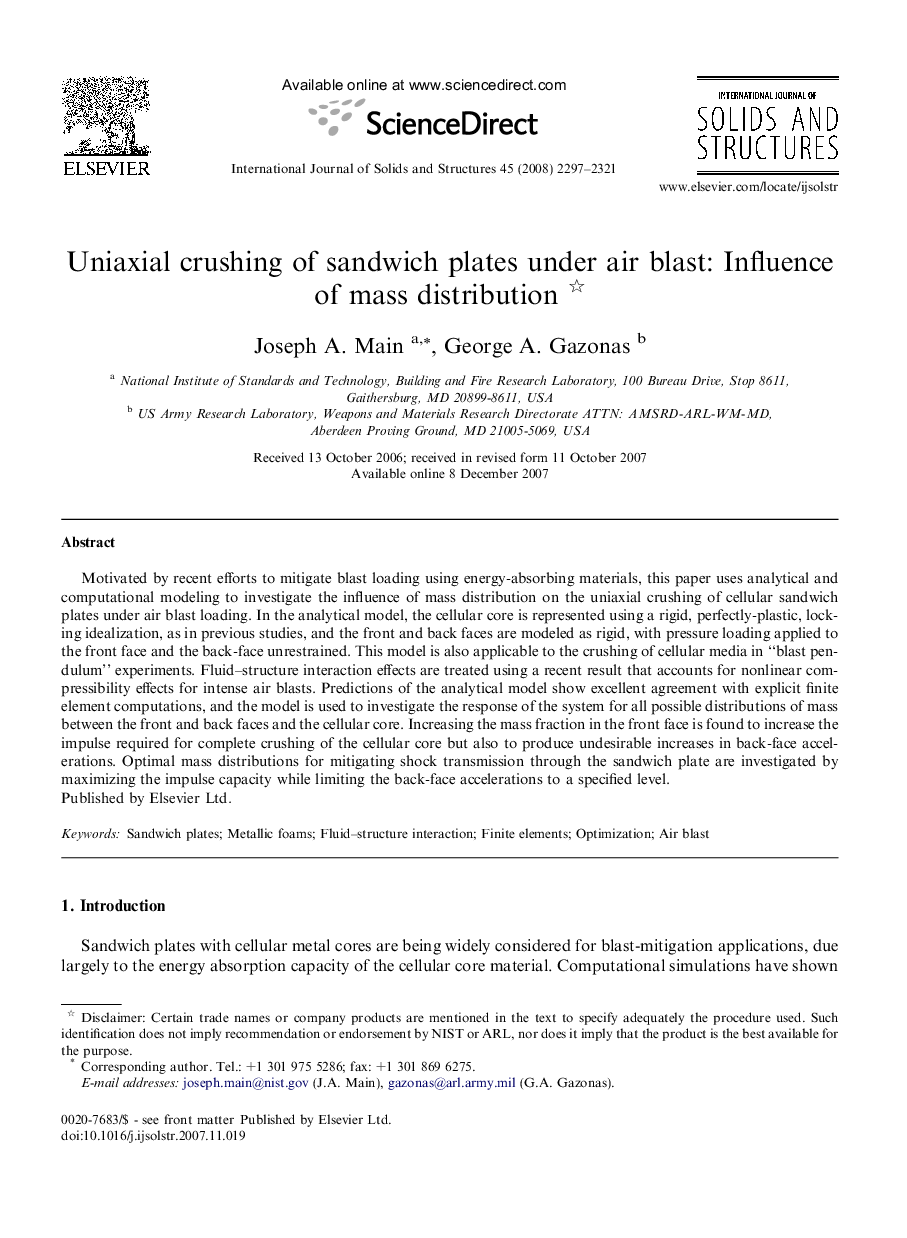| Article ID | Journal | Published Year | Pages | File Type |
|---|---|---|---|---|
| 279465 | International Journal of Solids and Structures | 2008 | 25 Pages |
Motivated by recent efforts to mitigate blast loading using energy-absorbing materials, this paper uses analytical and computational modeling to investigate the influence of mass distribution on the uniaxial crushing of cellular sandwich plates under air blast loading. In the analytical model, the cellular core is represented using a rigid, perfectly-plastic, locking idealization, as in previous studies, and the front and back faces are modeled as rigid, with pressure loading applied to the front face and the back-face unrestrained. This model is also applicable to the crushing of cellular media in “blast pendulum” experiments. Fluid–structure interaction effects are treated using a recent result that accounts for nonlinear compressibility effects for intense air blasts. Predictions of the analytical model show excellent agreement with explicit finite element computations, and the model is used to investigate the response of the system for all possible distributions of mass between the front and back faces and the cellular core. Increasing the mass fraction in the front face is found to increase the impulse required for complete crushing of the cellular core but also to produce undesirable increases in back-face accelerations. Optimal mass distributions for mitigating shock transmission through the sandwich plate are investigated by maximizing the impulse capacity while limiting the back-face accelerations to a specified level.
